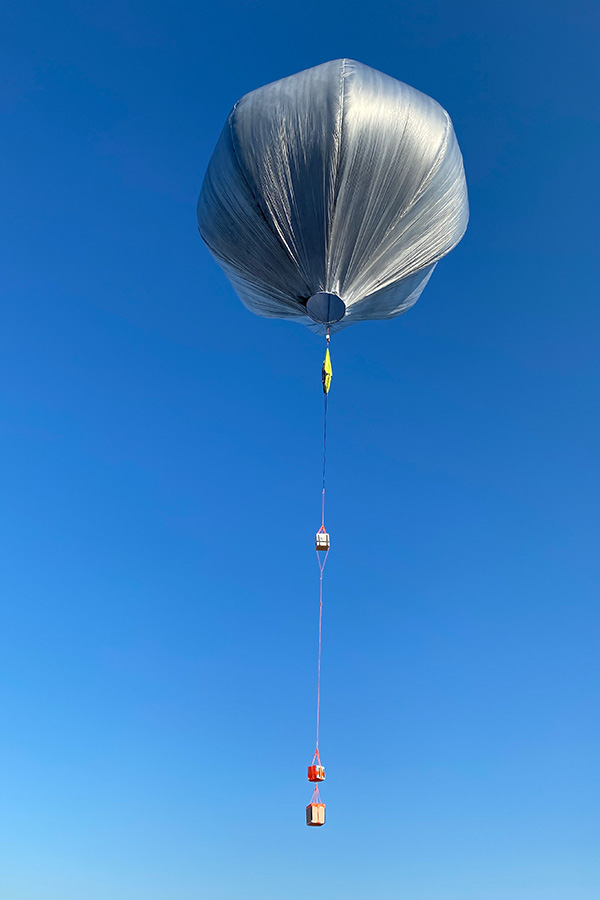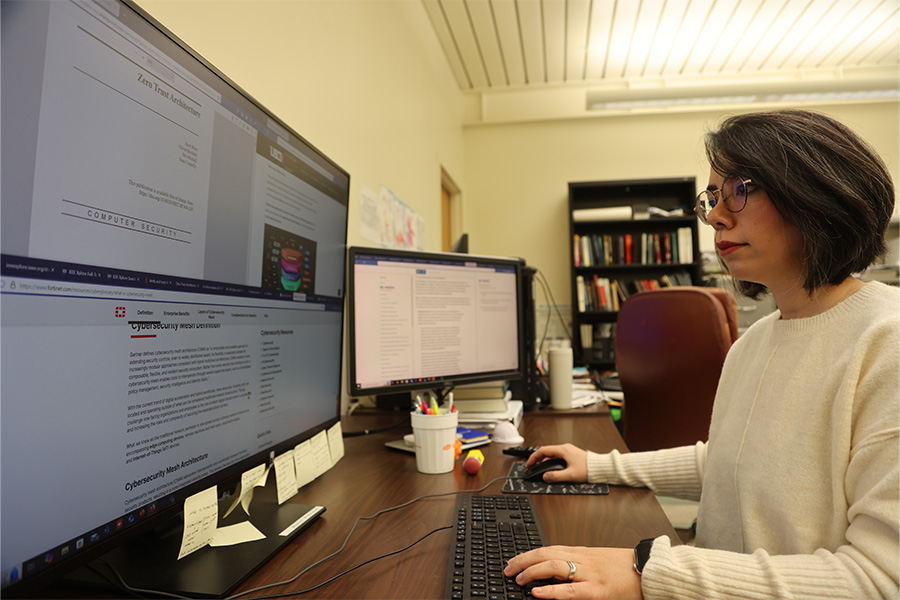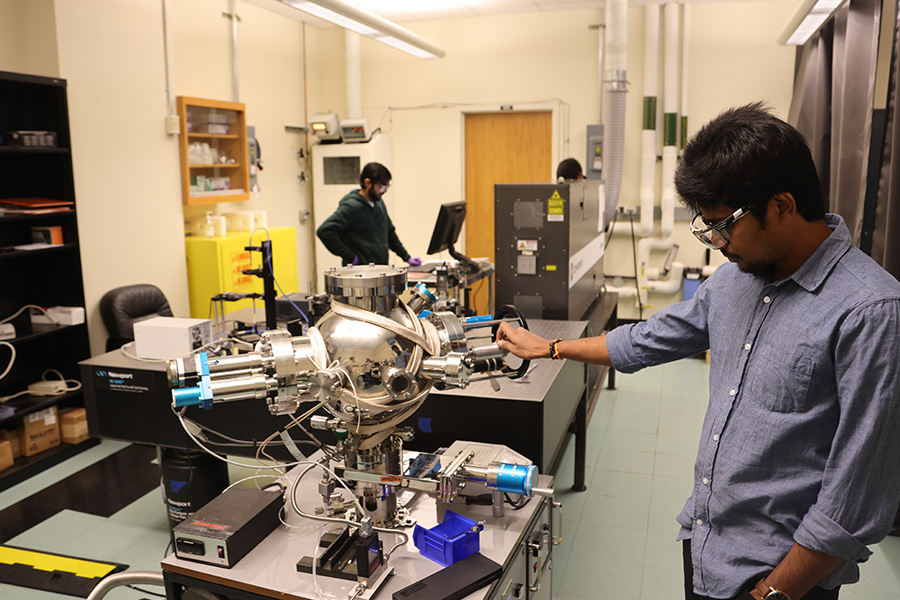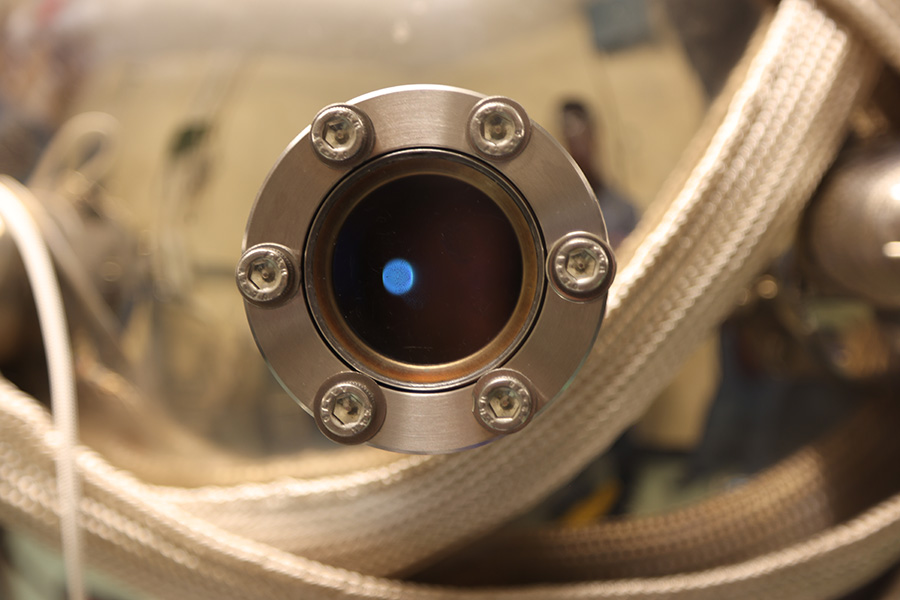
CEAT research focusing on interdisciplinary NASA projects
Monday, February 17, 2025
Media Contact: Tanner Holubar | Communications Specialist | 405-744-2065 | tanner.holubar@okstate.edu
The College of Engineering, Architecture and Technology is home to many different interdisciplinary research efforts.
One example is multiple projects with NASA, as CEAT researchers are studying types of cybersecurity, infrasound noise mitigation for Venus exploration and development of multi-elemental thermal coatings for super alloys.
Dr. Andy Arena, professor and Cunningham Chair of the School of Mechanical and Aerospace Engineering, is the principal investigator for the three projects working alongside researchers in other CEAT schools.
Infrasound screens for use in Venus’ atmosphere
Dr. Brian Elbing, professor in MAE, is involved in a one-year project with NASA titled “Universal Infrasound Mitigation for Aerial Platforms on Venus.”
Elbing said he and Arena have worked with NASA for a while to develop a small windscreen for infrasound measurements on a balloon. Infrasound refers to sounds that exist at frequencies below what humans can hear.
Elbing’s team is looking to develop a windscreen that can be put on a balloon platform on Venus and record seismic activity.

The planet is believed to have a similar internal structure to Earth, but the hot Venusian surface has prevented seismological studies. Elbing’s research indicates that seismic activity can be measured by infrasound.
Their goal is to be able to fly infrasound sensors on a balloon within a region of the Venus atmosphere with similar conditions to Earth. This would allow the sensors to last longer than is currently possible on the planet’s surface.
"For the past several years we have been working with NASA to demonstrate that infrasound produced by earthquakes (or Venusquakes) carries information about the mechanism that produced the quake and that it can be detected in the upper atmosphere,” Elbing said. “Hence, we have growing evidence that we could fly balloons with infrasound sensors in the Venus atmosphere and use detections from quakes to infer the structure of Venus.”
This one-year project started in the fall with work focusing on balloon designs that can withstand the extremely windy conditions on Venus. Undergraduate students performed preliminary design work in spring 2024 in Elbing’s experimental fluid dynamics course.
The team is looking to identify at least one type of windscreen that reduces noise at speeds up to five meters per second. Elbing will lead ground and field tests of different windscreen designs and then will take the most promising designs and fly them in summer 2025 to test their performance.
“The windscreens will reduce the noise at the sensor, which would lower the threshold of how large the quake would need to be in order for a detection,” Elbing said. “Hence, increasing the probability of detection during these flights.”
Cybersecurity mesh architecture
With more people working from home, utilizing the cloud and using personal devices for work-related tasks, there is a need for a different approach to cybersecurity.
The National Institute of Standards and Technology and Presidential Executive Order 14028 directed federal agencies to pivot to a zero-trust cybersecurity concept.
Zero-trust means that each device connecting to a network should not be inherently trusted. Data access instead is continuously monitored and verified as opposed to granting permission once to a user.
CEAT researchers are working on a project with NASA to create a cybersecurity mesh architecture (CSMA) to implement this zero-trust principle. Dr. John Hu, assistant professor in the School of Electrical and Computer Engineering, and Arena are working together on this project.
Hu said a challenge with large-scale networks is there are often too many security monitoring tools focusing on specific types of threads, creating data silos that don’t integrate well together. Their research will focus on what is needed to lay the foundation to enable CSMA.
“A cybersecurity mesh architecture is a composable, flexible and modular approach
that breaks barriers between silos and forges interoperation through consolidated
policy management, security intelligence and identify fabric,” Hu said.

NASA is currently in a digital transformation as it looks to “become more competitive in a digital workplace, use resources more efficiently, and ensure safety from increasing digital threats,” according to NASA’s website.
The CEAT team’s task is to rigorously study how NASA’s system can be migrated to a CSMA.
“A key limitation in current knowledge of the cybersecurity mesh architecture is the vagueness in its implementation details, the hardware and network cost, and how security considerations of the mesh will trade off with other performance,” Hu said. “This research will also lay the foundation for future work on how to best use artificial intelligence and machine learning to secure and defend the mesh in real time.”
This one-year, explorative project will lay the foundation for optimizing a zero-trust information environment into a CSMA. It will also focus on discovering the network operations and cybersecurity telemetry required to detect, respond and recover data in the event of a cybersecurity risk.
Development of silicide coatings for high-temperature applications
A team of Arena and Dr. Ritesh Sachan, an MAE professor, is working on a NASA rapid response research project looking to develop high-temperature multi-principal element silicide coatings that can withstand temperatures up to 1,200 degrees Celsius.
These coatings are made up of a combination of elements and have been used as a coating on super alloys. These alloys are not able to withstand extreme heat on their own and require thermal barrier coatings.
“They should not react, they should not create defects,” Sachan said. “They should have enough mechanical strength at that temperature."
The coatings being developed are of high entropy materials, made by mixing five or more elements together to create one unique material. This mixing is done down to the atomic level, creating an atomic crystal structure of one element.
This process replaces the individual “parent atoms” of the one elements and replaces them with atoms of other elements, thus forming atomically-mixed high-entropy materials.
“You are mixing it at the atomic level and keeping the structure intact,” Sachan said. “Every material has a certain crystal structure, and these are the building blocks. When you mix five or more elements, you create a lot of disorder. Because now it becomes difficult to distinguish these atoms individually at the atomic level.”
Sachan’s team creates these elements using a custom-built pulsed laser deposition system. The system uses ablation, when a laser hits a material and the material absorbs the laser’s energy, converting the material to heat. The material’s top layer ablates and deposits on a surface. This process is used by the team to create prototypical sets of elements that are then tested.
Sachan’s team is working with Dr. Ron Noebe, a materials expert at NASA’s Glenn Research Center, on categorizing different combinations of elements and how they grade in testing.
Traditional silicide coatings have had problems preventing defects at high temperatures,
resulting in the need to test as many elements as possible. High entropy coatings
can remedy some of these issues.


"High entropy is another term for disorder or chaos,” Sachan said. “When you create that type of chaos you can reduce atomic diffusion. Atoms don’t like to diffuse in such strained environment, which strengthens the material.”
Due to so many possible combinations of elements, the team is testing numerous combinations of materials to determine which ones work best. The ability for OSU to produce these elements results in a thorough testing process.
“Even in a single sample we can vary the composition or the ratio of this element,” Sachan said.
There are about 10 elements the team has zeroed in on, including niobium, zirconium and hafnium, and mixing them with elements such as nickel, iron and chromium.
This research provides an opportunity for undergraduate and graduate students to work on fundamental research and get exposure to cutting edge technology.
“Students are taking interest in this new materials research because there are so many unknowns to begin with,” Sachan said. “Because we first need to make this material to be able to test anything. And that is why this is a high-risk, high-reward project. But they have gotten a good sense of the fundamental science and have made substantial progress and have successfully made a couple of high entropy compositions.”
These research projects are representative of the strong interdisciplinary efforts that take place in CEAT. The ability for researchers to partner with experts in other CEAT schools strengthens the college as a whole and provides innovative solutions to engineering challenges.
